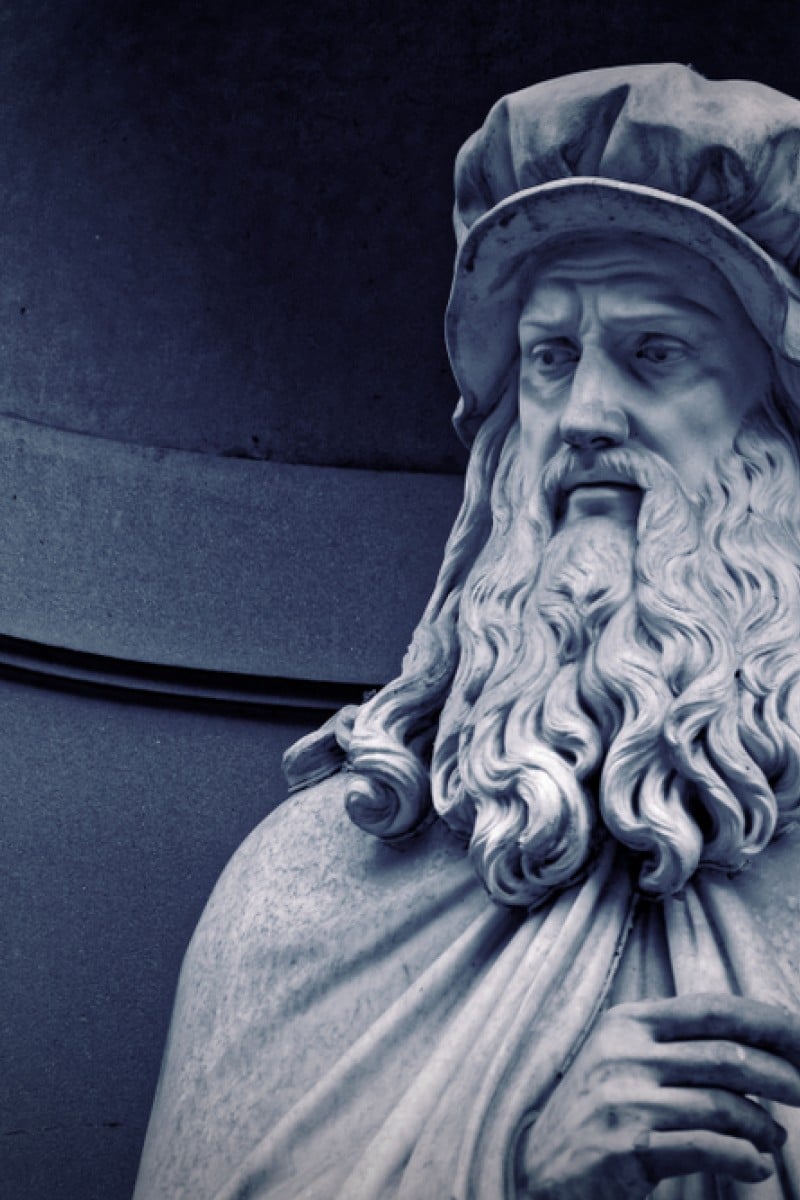
Leonardo da Vinci 500: 5 things about the artist and inventor you didn't know
Today marks half a millennium since the death of the creator of the Mona Lisa and The Last Supper
 Leonardo da Vinci was the original "Renaissance Man".
Leonardo da Vinci was the original "Renaissance Man".Today marks the 500th anniversary of Italian polymath Leonardo da Vinci’s death. Dubbed the “Universal Genius” and the “Renaissance Man”, da Vinci was born in 1452, in the Italian town of Vinci.
While he’s mostly known for his paintings such as the Mona Lisa and The Last Supper, he was also an expert in science, paleontology, music, architecture, mathematics, engineering, literature, anatomy (the list goes on). Suffice it to say, he was a man that was well ahead of his time, and has contributed to our understanding of the world in more ways than we’ll ever know.
In honour of his many achievements, here are five fun facts about the influential man.
He was a master procrastinator
As he once famously said, “Art is never finished, only abandoned,” da Vinci would’ve been a prolific painter - if only he’d finished his own work. While there are countless doodles and drawings in his notebooks, which span more than 7000 pages, it is believed that he only finished about 20 paintings before he died at the age of 67.
In 1481, he began working on The Adoration of the Magi, an altarpiece commissioned by the Augustinian monks, which was left unfinished when he moved to Milan the following year. The duke of Milan once commissioned a equestrian statue from da Vinci, which was to have been more than 7 metres tall. It would’ve been the largest equestrian statue ever at the time and a great addition to his portfolio - if only he’d finished it. A decade since the project began, he had only made a clay model which was later destroyed by French soldiers.
His unrivaled knowledge of anatomy
Da Vinci had an unrivaled knowledge of human anatomy. He was the first to draw an accurate sketch of the human spine as well as a fetus. His anatomical drawings were so accurate and detailed, that many believe they were at least a century ahead of their time.
His notebooks showed a deep understanding of how different body parts worked in relation to one another. From bones, muscles to the blood circulatory system, he managed to master everything but the female reproductive system. His expertise in anatomy also led to drawings of gears and levers, which can often be found in the gadgets he invented.
A self-taught genius
An illegitimate son born out of wedlock, da Vinci never received a formal education. He became an apprentice to Andrea di Cione, better known as Verrocchio, at the age of 14. He never went to university and often referred to himself as an “unlettered man”.
As a result, he was very much a hands-on learner, and regularly performed experiments. As an inventor, he drew blueprints and made prototypes of a parachute, tank, helicopter, diving suit, and many more. Instead of being bound by the four walls of a school or theories in textbooks, he often drew conclusions from his own observations, which is evident throughout his heavily annotated notebooks.
His mirror writing
His iconic, self-invented mirror writing is read from right to left and can only be deciphered with a mirror. It was not so much an effort to keep everything a secret as it was a mere personal preference - he was dyslexic, ambidextrous and left-handed, and perhaps did so to keep his hand clean and prevent ink from smudging.
His decision to leave his notebooks unpublished created a certain mystique to his writing. Adding fuel to the fire, American author Dan Brown suggested in his 2003 best selling novel The Da Vinci Code that da Vinci was the Grandmaster of a secret society called the Priory of Sion, and wrote cryptic messages in reverse writing. For the most part, da Vinci only wrote in the normal direction when the text was meant to be shown to others.
The da Vinci Look
Just like his experiments, da Vinci developed and invented numerous painting techniques - such as sfumato and using a linear perspective - that made his paintings instantly recognisable.
Sfumato is the blending of different colours that softens the edges and creates a hazy look. Two of the most notable artworks where this technique was used are the Mona Lisa and Virgin of the Rocks. The numerous layers of underpaints are blended seamlessly, drawing focus to the subjects and giving viewers the freedom to fill in the blanks with their imagination.
Also, the paintings during the medieval period often lacked depth and volume. However, he championed a technique called linear perspective. The perfect example of this would be his masterpiece, The Last Supper, where all the lines converge at a single point (Jesus), and objects appear larger when they are close, and smaller when they are far away.
